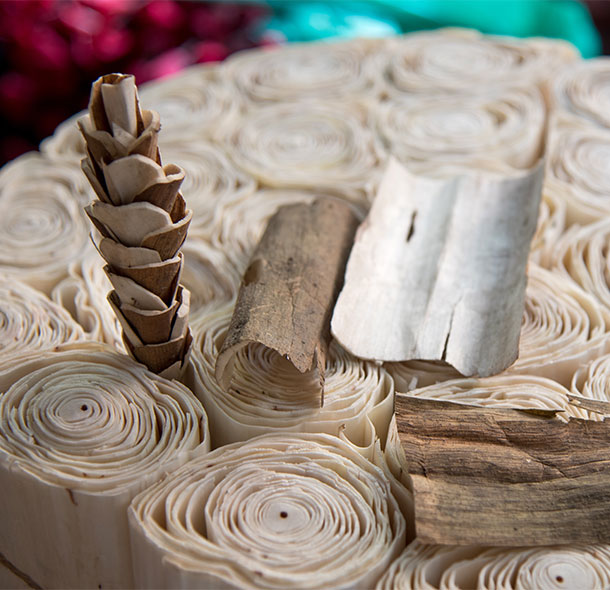

The history of Shola is entangled within interesting mythological stories which are intricate parts of Bengal’s folklores. As the legend goes:

Shola cultivation takes place under 4-5ft water during the monsoon months of June-July. The lack of marsh lands has restricted Shola cultivation only in the regions of South 24 Parganas. They cultivate Shola as a cash crop.
Geographical Location : The tradition of sholapith craft stretches throughout Bengal, covering the districts of Cooch Behar, Alipurduar, Dinajpur, Malda, Murshidabad, Birbhum, Burdwan and South 24 Parganas with prominent diversities in each region.
In every Bengali custom and ritual, one finds the ubiquitous “Chandmala”, “Kodomphool”, and garlands of Shola. The “Saitol”, which is omnipresent in weddings, funerals, and the first ceremonial meal of a child is fashioned out of Shola in the Rangpur tradition. The worship of Manasa, the Goddess of snakes, fertility, and wealth, is incomplete without the “Manasar Chali” – which is a halo of snake hoods around her head. This crowning glory is crafted out of Shola.Shola became hugely popular during the period of the British Empire. The “pith helmet” was worn in colonies in Asia and Africa. So much so that even after the British Raj, the Shola Toupée continued to be symbolic of the colonisers.Toys, accessories, and decorative items made of Shola are both eco-friendly and aesthetic. Intricately carved objects like miniature landmarks and figurines are valuable keepsakes. Not only are they visually splendid showcases of skilled craftsmanship, they are hallmarks of glorious indigenous cultural tradition.
